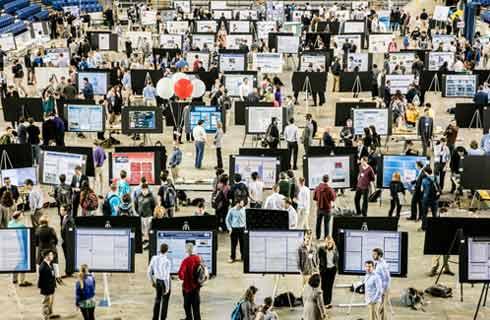生物技术科学学士-生物信息学
Bachelor of Science in Biotechnology - Bioinformatics

学历文凭
Bachelor Degree

专业院系
Department of Biology

开学时间

课程时长

课程学费

国际学生入学条件
Notarized translation is needed if your transcripts/documents are not in English
Official evaluation of high school transcript by a professional evaluation service
TOEFL, IELTS, Pearson PTE, DAAD, EIKEN, Duolingo, or iTEP Score Report if education was in a language other than English
SAT or ACT Score Report (Worcester State SAT Code: 3524 or Worcester State ACT Code: 1914)
Original bank letter or statement verifying sponsor's financial information
Adequate test of English language proficiency: This is required for all applicants whose native language is not English. It can be accomplished by submitting results of the Test of English as a Foreign Language (TOEFL) (iBt 79) or International English Language Testing System (IELTS) (minimum required score: 6.5).
Additional accepted English proficiency exams: Duolingo Test (minimum required score: 100), Pearson PTE (minimum required score: 50), DAAD (minimum required score: B2), EIKEN (minimum required score: Pre-1), and iTEP (minimum required score: 3.5).
Applicants who have received an Associate's degree from a regionally accredited United States college or university are not required to submit an English proficiency exam.
Minimum cumulative Grade Point Average: Worcester State requires a minimum 2.0 cumulative GPA from the last institution you attended.
IDP—雅思考试联合主办方

雅思考试总分
6.5
- 雅思总分:6.5
- 托福网考总分:79
- 托福笔试总分:160
- 其他语言考试:Pearson PTE (minimum required score: 50)
CRICOS代码:
申请截止日期: 请与IDP联系 以获取详细信息。
课程简介
This interdisciplinary minor will prepare you to enter the computer-intensive fields of bioinformatics, computational biology, computational chemistry, and molecular modeling, including genomics and proteomics. With the ever increasing number of fully sequenced genomes, including the human genome, databases such as GenBank and EMBL have grown at such a rate that storing, organizing, indexing, and ultimately mining the data have become key to answering biological questions. Questions of gene expression have led to computational biology, the process of analyzing genomic sequences, and to the field of proteomics, the understanding of protein structure and function. The information obtained by computational biology and computational chemistry is used in the design of new drugs to treat a variety of diseases.
相关申请
 预科
预科 奖学金
奖学金 实习机会
实习机会 在校学习
在校学习 跨境学习
跨境学习 校园授课-线上开始
校园授课-线上开始 在线/远程学习
在线/远程学习
开学时间&学费
学费信息仅供参考,请与IDP联系以获取详细信息
| 开学时间 | 时长 | 学费 | 地点 |
|---|
本校相关课程

视觉与表演艺术学士学位
学历文凭
Bachelor Degree
开学日期
课程费用总额


视觉与表演艺术与幼儿文学学士学位
学历文凭
Double Major Degree
开学日期
课程费用总额


计算机科学学士学位
学历文凭
Bachelor Degree
开学日期
课程费用总额


视觉与表演艺术与基础教育文学士
学历文凭
Double Major Degree
开学日期
课程费用总额


计算机科学理学学士-大数据分析
学历文凭
Bachelor Degree
开学日期
课程费用总额


计算机科学理学学士-生物信息学
学历文凭
Bachelor Degree
开学日期
课程费用总额

其他相关课程

生物信息学文凭
 兰加拉学院
兰加拉学院学历文凭
Bachelor Degree
开学日期
课程费用总额


生物信息学管理研究生课程(2学期)
 乔治梅森大学-INTO USA
乔治梅森大学-INTO USA学历文凭
Foundation for Postgraduate
开学日期
课程费用总额


Professional Science Master's in Bioinformatics
 特拉华大学
特拉华大学泰晤士高等教育世界大学排名:474
学历文凭
Professional Masters Degree
开学日期
课程费用总额


Bachelor of Science in Bioinformatics
 弗吉尼亚联邦大学 - Navitas USA
弗吉尼亚联邦大学 - Navitas USA学历文凭
Bachelor Degree
开学日期
课程费用总额


Doctor of Philosophy in Bioinformatics and Computational Biology
 乔治梅森大学-INTO USA
乔治梅森大学-INTO USA学历文凭
Ph.D.
开学日期
课程费用总额


生物信息学哲学博士
 波士顿大学
波士顿大学泰晤士高等教育世界大学排名:76
学历文凭
Ph.D.
开学日期
课程费用总额











